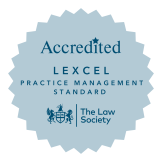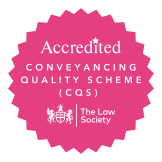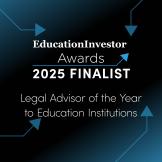There is a strong desire amongst existing multi-academy trusts to grow.
A significant number of small trusts consist of 2 – 5 schools. To maximise the benefits of multi-academy trusts (including economies of scale), leaders of multi-academy trusts are looking to grow to include 8 – 12 schools and, in certain cases, more.
The Department for Education has issued guidance on the growth of multi-academy trusts. It is becoming increasingly relevant as the focus on growth continues.
The process of adding a school to your multi-academy trust
Our education law solicitors can guide you through the process of adding a school to your multi-academy trust. We will provide timely, cost-effective and comprehensive practical advice and assistance throughout the project.
From the start of the project, we will put together a team with the required expertise to ensure an efficient process.
A project leader will be appointed. They will oversee the process and will be available at all times to answer your queries and keep you updated on progress.
That project leader will be available via their direct dial and by email. You will also have contact details for the rest of the team. You can get in touch with whoever you need to at any time.
Adding schools to a MAT is not the only way for a trust to grow. The education lawyers in our specialist team can advise you on the other options available.
Where possible, we can facilitate opportunities for our multi-academy trust clients to discuss innovation and best practice with you.
Effective school governance
We firmly believe that for multi-academy trusts looking to grow, a key factor in supporting sustainable growth is ensuring that an effective governance structure is in place.
The key elements of effective governance are:
- Strategic School Leadership - trustees should ensure that there is a vision, ethos and strategic direction established. Once they are in place, plans can be put in place to deliver the strategy. Trustees should challenge senior leadership and other staff on results based on the strategic plan developed.
- Accountability - trustees are accountable for the use of public funds awarded to a trust. As a result, there must be effective communication of decisions and results to key stakeholders, including parents where appropriate. There must also be a mechanism for feedback from stakeholders to be received. Feedback can then be considered and included in planning and decision making.
- People - it is important the board of trustees has skills in a wide variety of areas. Skills gaps should be identified following a skills audit and recruitment should be based on the skill shortages.
- Structures - the MAT governance structure will not be the same for all trusts. The level of autonomy given to local governing bodies will differ. The level of delegation to local governing bodies should be clear.
- Compliance - in order to ensure compliance, regularity and consistency it is important that systems are put in place that applies across the trust. Putting in place policies and written procedures can assist in achieving this, along with the standardisation of reporting across all areas, including finance. The benefit of this is that it improves efficiency in the production and review of information and allows benchmarking across schools.
- Evaluation - as a multi-academy trust grows, it is important that existing governance is considered. It is useful to consider an external review of effectiveness. As the multi-academy trust grows, it may decide to create regional boards that govern a group of schools within a trust.
Contact us to talk about adding schools to your MAT
However you are looking to grow your trust, we would be happy to have an initial conversation with you on a no-cost basis. If matters proceed further, we will provide fixed fees for advising and assisting you whenever possible.

Contact our education law specialists
For further details or to have a no-obligation chat regarding growing your MAT, please contact Thomas Emmett, solicitor and Head of the Education team at Birkett Long.










